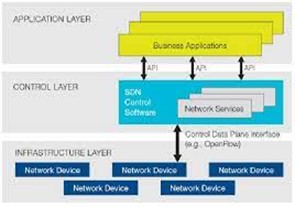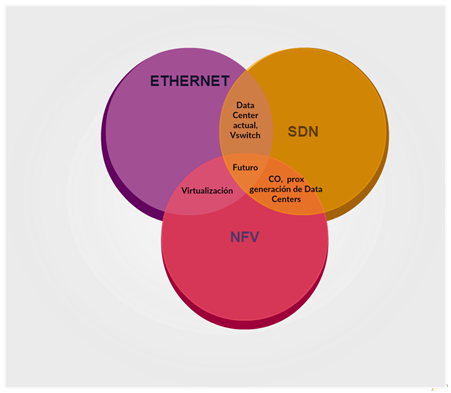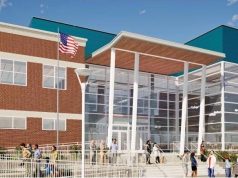Elvis Moreno of New York works as a network engineer. In the following article, Elvis Moreno discusses the impact of SDNs within the industry.
Where there were once manually moveable cables, there are now easily accessible, agile layers that make network engineering more flexible and controllable. This revolutionary method, software-defined networking, has revolutionized the industry (and many others) since its implementation.
Elvis Moreno of New York says that from giving engineers a centralized control console to improved fluidity between devices to the heavily relied upon cloud infrastructure, digital life and the role of network engineers wouldn’t be the same without software-defined networking.
Elvis Moreno of New York Explains More on SDNs
Traditional network architecture involves dedicated, fixed-function hardware and network devices like switches and routers that control the traffic — a far cry from the centralized control console used by SDN.
The aptly named structure uses software to allow/disallow devices and their access to other areas of the network. According to the industry participants at TechTarget, SDN architecture uses three layers — application, control, and infrastructure — which communicate using southbound and northbound APIs (application programming interfaces).
Firewalls, load balancing, intrusion detection systems, and other functions sit in the application layer. It replaces the specialized physical appliance used in traditional networks.
Elvis Moreno of New York says that the centralized SDN controller software is housed in the control layer, acting as the brain of the entire network. Engineers access its server to deal with traffic and permissions.
Inside the infrastructure layer sits the network’s physical switches that forward traffic to their desired destinations.
Encompassing various technologies like network virtualization, programmable automation, and functional separation, software-defined networks let applications talk to the controller, which then communicates to the switches through interfaces like OpenFlow.
The Profound Impact of SDN on Network Engineering
Elvis Moreno of New York notes that the development of centralized controllers and separation of data planes had an everlasting effect on the network industry and the professionals who work within in. And as the technology matures, it doesn’t just alter network infrastructure design, but how the entire IT sector views its role.
Centralizing Controls for Exceptional Ease and Efficiency
Perhaps the biggest impact is this: engineers and managers no longer have to toil to consider each asset as a standalone entity, but work seamlessly with a network en masse through the centralized control system. After what purportedly felt like eons, network professionals finally have one touchpoint for an endless array of devices.
Bringing Effortless Programmability and Customizability to Organizational Networks
Elvis Moreno of New York explains that the programmable and customizable aspects also changed the game. Using open protocols, SDN architects can ensure proper software control at the very edges of their networks, allowing access to routers and network switches and negating the less flexible closed, proprietary firmware.
Automating Controls for Reduced Human Error
After programming, human intervention isn’t necessarily required. Nowadays, most software-defined networks are largely automatic, running off schedules or other parameters as needed by the organization.
Not only does this reduce the chances of human error, but it also boosts security; requests that don’t fit the predefined rules will never be granted, no matter the persistence of the fraudster.
 Simplifying Policy Changes
Simplifying Policy Changes
SDN lets engineers or assigned administrators change any switch’s rules at the drop of a hat through the centralized controller. From blocking certain packet types to deprioritizing or prioritizing certain items, professionals can make these alterations with granular-level security, accuracy, and flexibility.
Elvis Moreno of New York notes that cloud computing multi-tenant architecture is especially grateful for this particular capability since it lets the engineer manage traffic volumes in a wholly efficient manner. Ultimately, it lets business save money through the utilization of cheaper commodity switches while boosting the level of control they have over traffic influxes.
Enhancing Network Visibility and Management
End-to-end visibility is a welcome addition to the networking world made possible by SDN. Administrators need to handle just one centralized controller to send policies to the myriad of switches, rather than configuring numerous separate devices.
Elvis Moreno of New York says that this increased visibility holds a major security advantage over traditional architecture since the controller monitors traffic from all sides, deploying protocols (e.g., dropping the packet or rerouting) at the blink of an eye should issues be detected.
Giving Rise to SD-WAN Technology
Network engineers working in larger conglomerates also note the profound effects of SD-WAN. While SDN is a different technology, its advancement brought forth SD-WAN — WANs that use SDN concepts to automatically figure out the most effective way to direct traffic to and from data center sites and offices in separate geographical locations.
Reference Sources
https://www.techtarget.com/searchnetworking/definition/software-defined-networking-SDN https://www.ciscopress.com/articles/article.asp?p=3145761&seqNum=4 https://www.kyndryl.com/gb/en/learn/sdn-vs-traditional-networking








